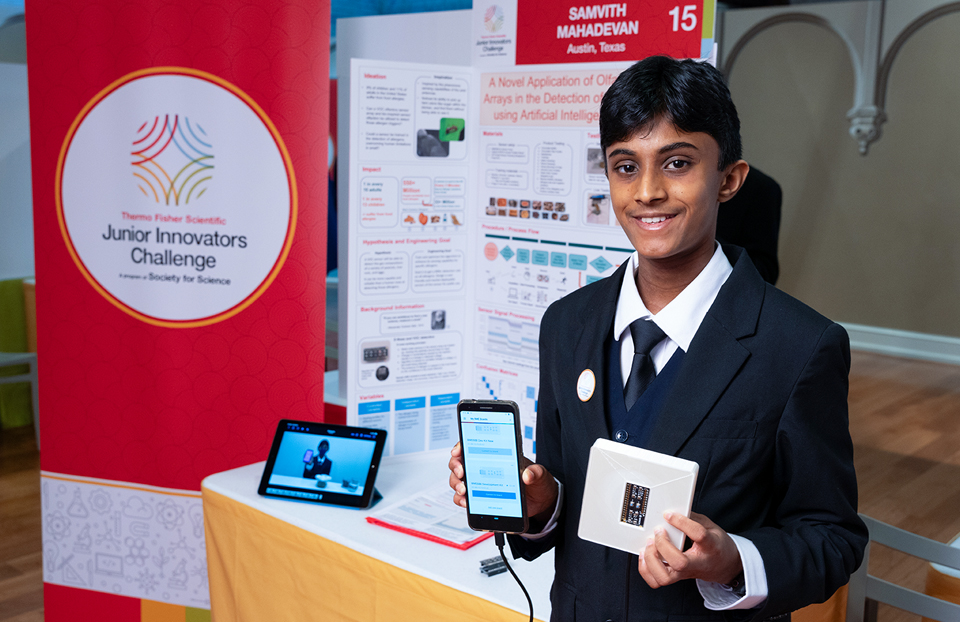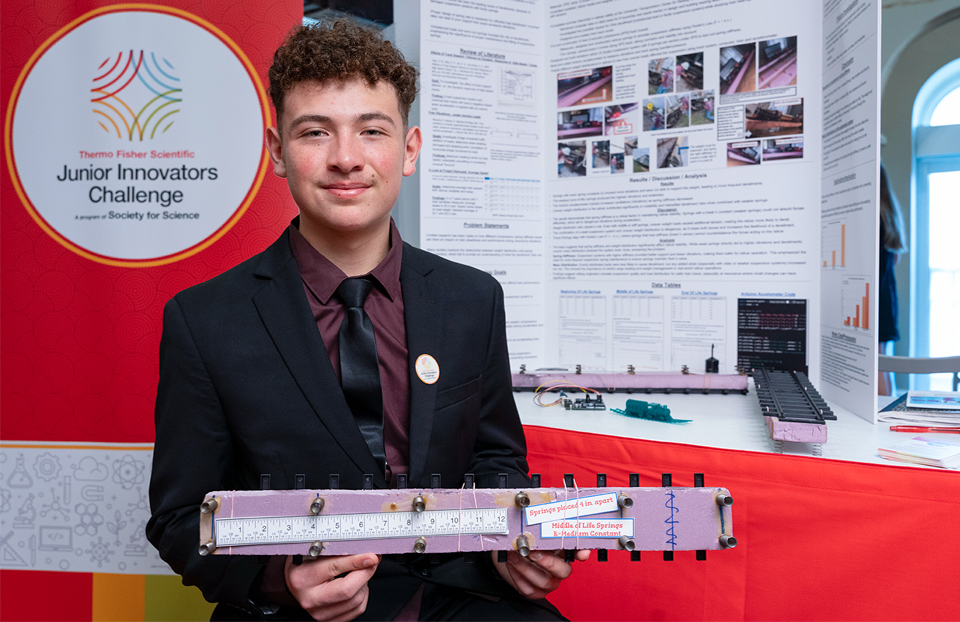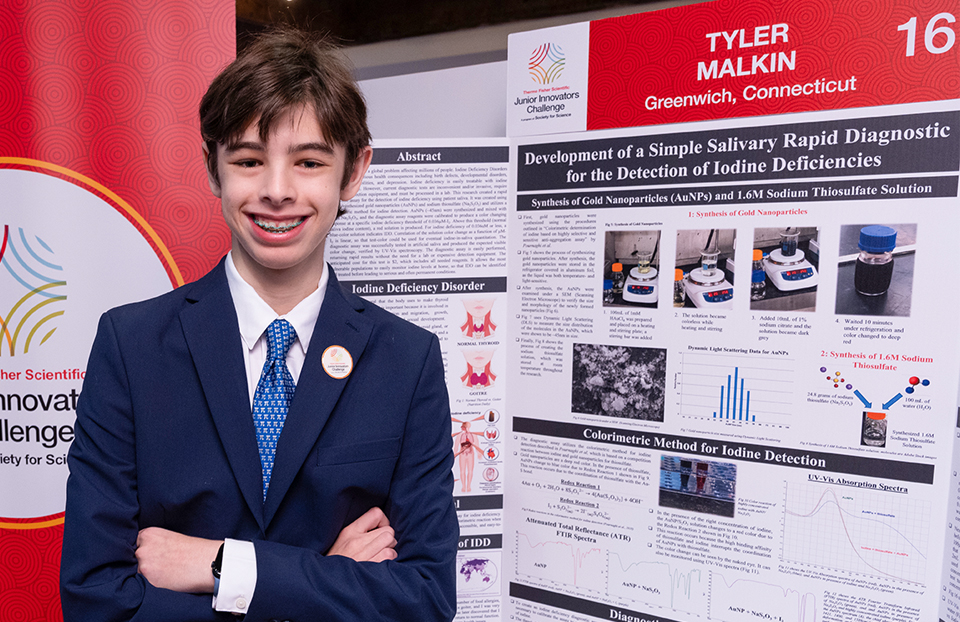In their first challenge, Junior Innovators explore biodiversity
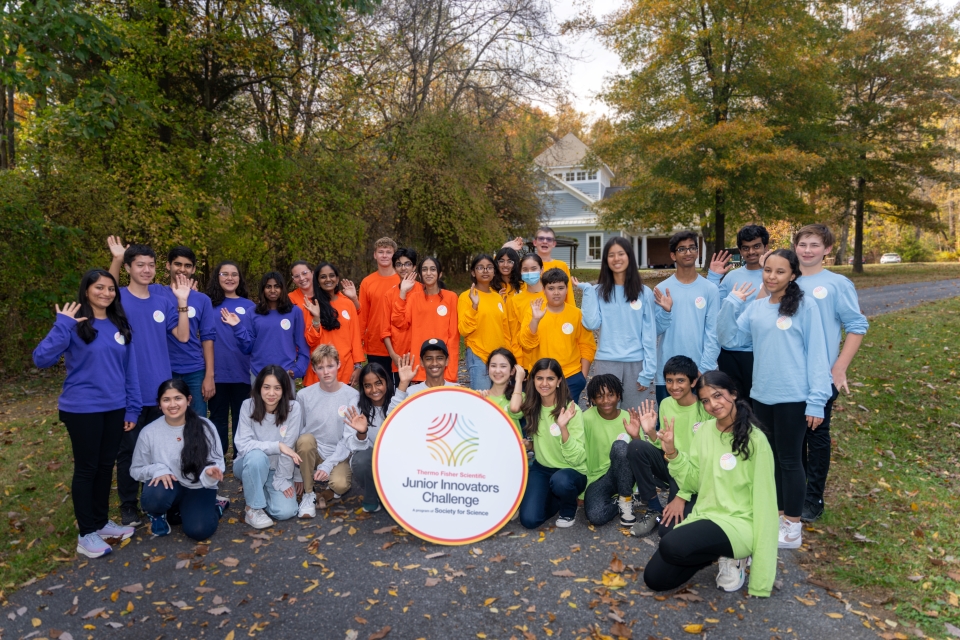
The first challenge of the Thermo Fisher Scientific Junior Innovators Challenge (Thermo Fisher JIC) took place at the Smithsonian Environmental Research Center (SERC) in Edgewater, Maryland, on the shores of the Chesapeake Bay. Spanning nearly 3,000 acres and 16 miles of shoreline, SERC is home to 20 research labs and about 150 staff members. A “living laboratory,” as Education Program Director Karen McDonald described it, SERC’s scientists study environmental science at the interface of land and sea. Climate change, forest health and how to control invasive species are just a few of their research areas.
As an introduction to the day’s challenge, SERC scientists Matt Ogburn and Anna Davis gave the finalists a primer in the biology and ecology of the Chesapeake, with a particular focus on Crassostrea Virginica, more commonly known as the Eastern Oyster. These oysters span from the coasts of Canada all the way down to South America and share a long history with humans—for example, Native Americans sustainably fished for oysters on the Chesapeake as long as 3,000 years ago. More recently, however, large-scale fishing and dredging have reduced oyster populations to an estimated 1% of their former numbers, which has had wide-ranging effects on marine ecosystems.
As such, scientists are working to monitor oyster reefs in the Chesapeake Bay and beyond, in order to bolster oyster populations and restore the biodiversity that depends on habitats created by oyster reefs.
Enter the Thermo Fisher JIC finalists. Each of the finalists’ six teams were challenged to design and build small rigs that could be submerged in the bay to both capture videos of the biodiversity around oyster reefs, while also collecting water samples for testing. Equipped with PVC pipes and connectors, duct tape, zip ties, rope and GoPro cameras, each group set off to engineer their submersibles.
Though each team had the same tools at their disposal, and identified many of the same central challenges, their ingenuity led them to some unique solutions.
The Purple and Green Teams independently created larger rigs, while the Orange Team opted for a more compact design. The Blue and Silver Teams left no stone unturned, thinking through multiple designs.
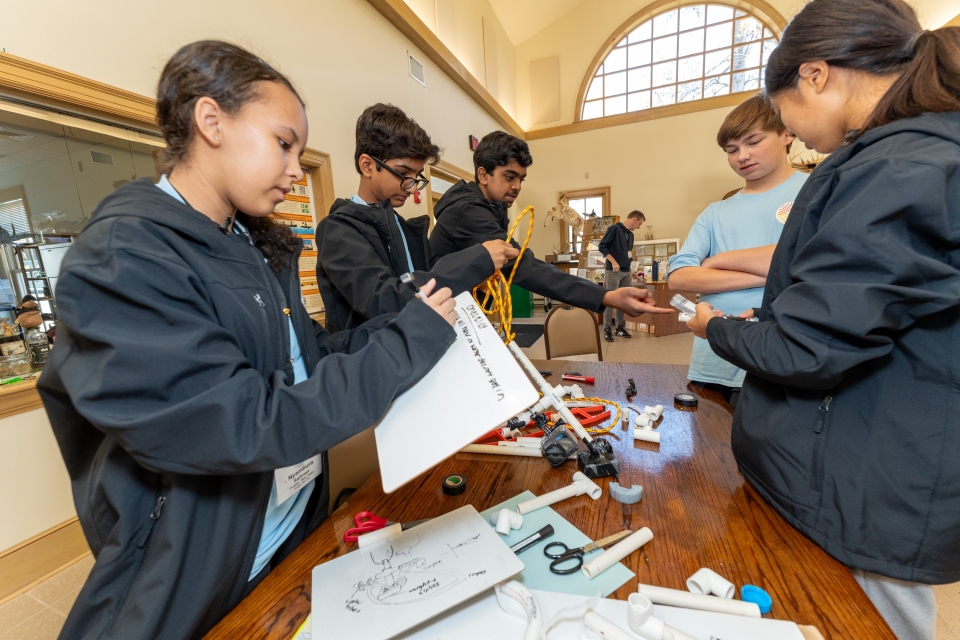
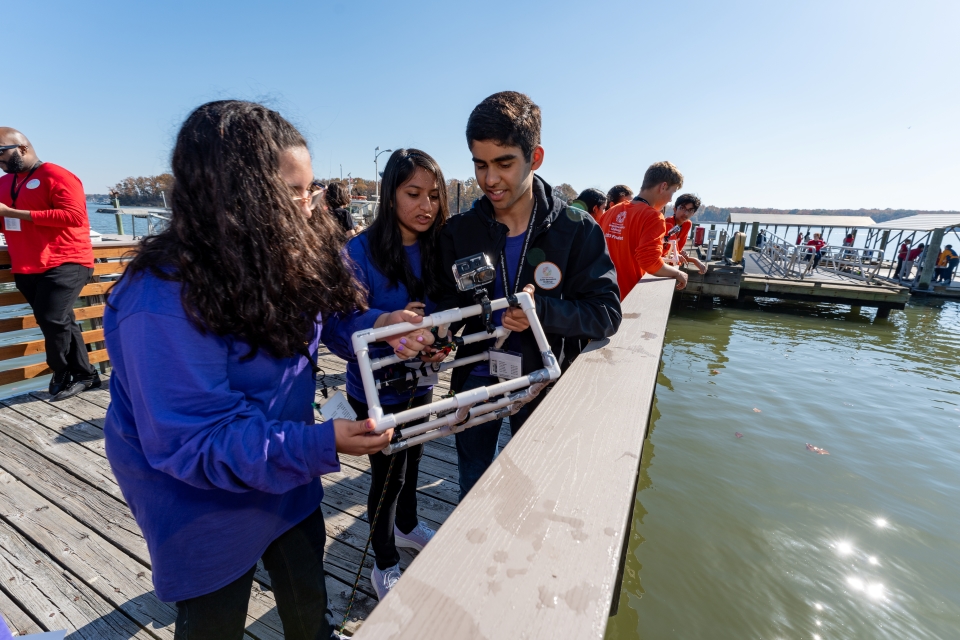
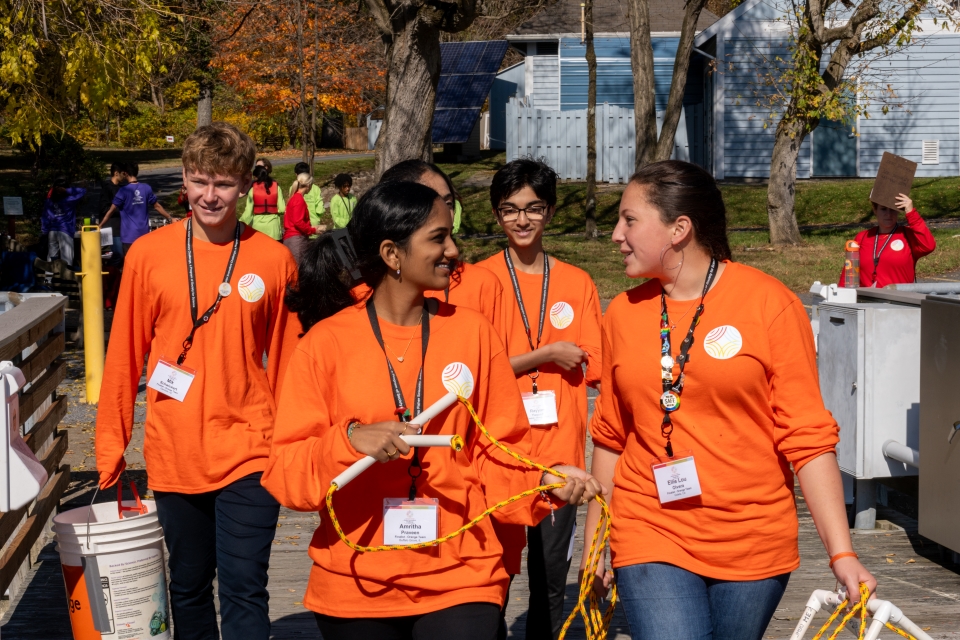
Designing their rigs was only one part of the day’s activities. Finalists also received expert training from Thermo Fisher scientists on how to test water quality with specialized equipment. With guidance from the Thermo Fisher team, finalists analyzed pH, nitrates and dissolved oxygen quantities in water samples from the bay. They also drew some meaningful conclusions from the data they collected.
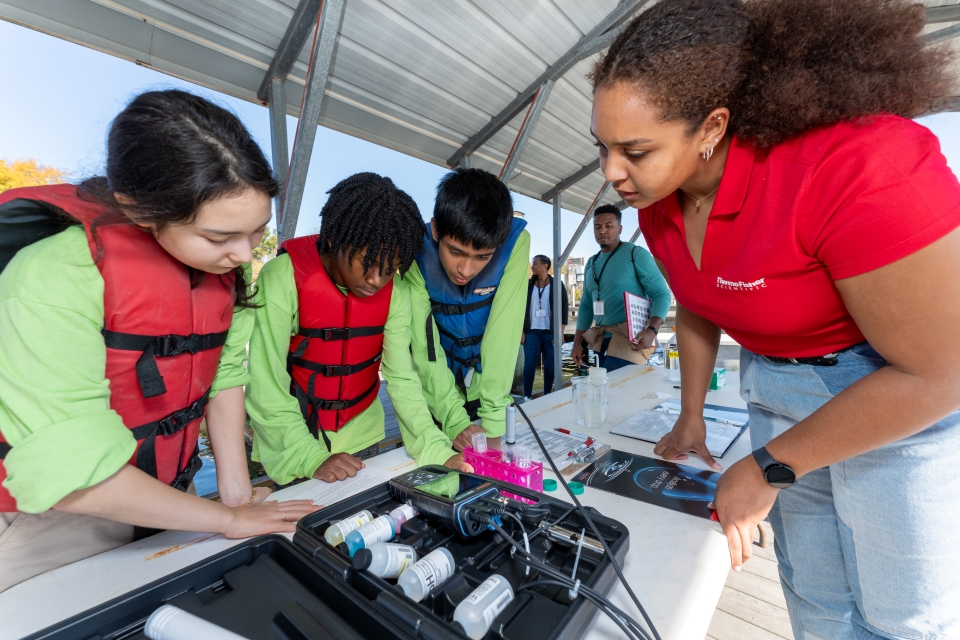
Additionally, finalists explored the biodiversity of the Chesapeake Bay by seining in its shallow waters. Seining is a method of fishing (or collecting samples, in this case) that involves gently dragging a large net through water. After sifting through the autumn leaves, finalists carefully transferred organisms they found into categorized buckets of “swimmers, hoppers, floaters and crawlers.”
The Gold Team, for example, collected nine different swimmers, in addition to several other hoppers, floaters and crawlers.
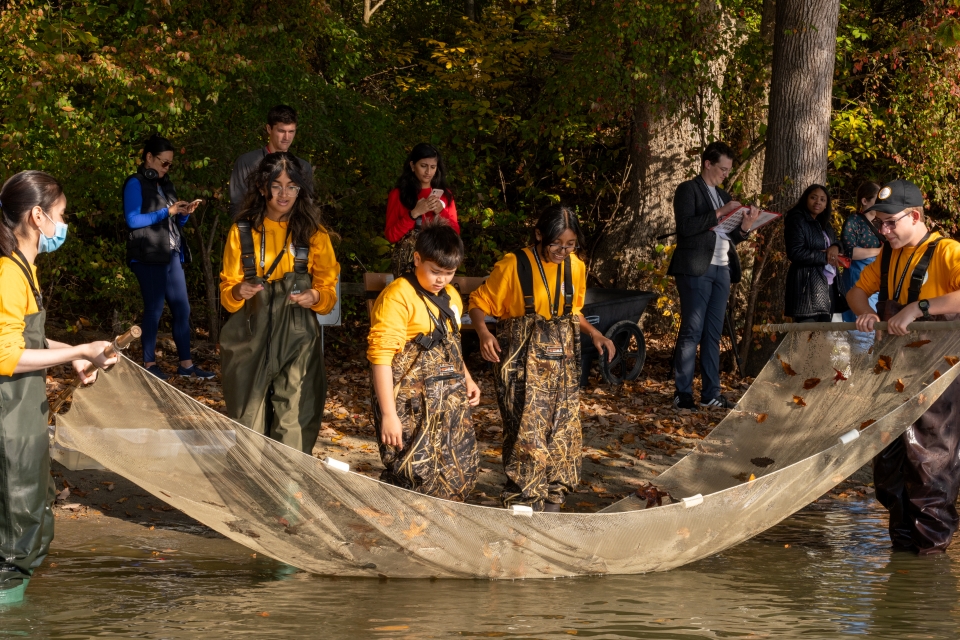
At the end of the challenge, each group met with the judges and discussed what went well, what they learned and what they might do differently. They also viewed the videos collected from their rigs.
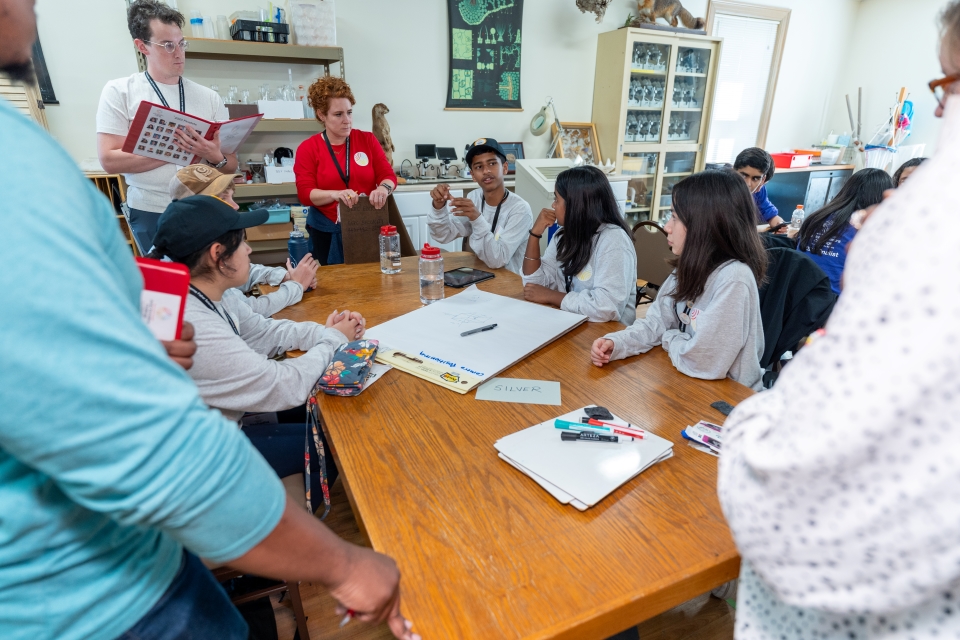
Wrapping up the day, Karen commended the finalists for their creativity and ingenuity, even noting that SERC may borrow some of the Junior Innovators’ ideas for their own future designs.
